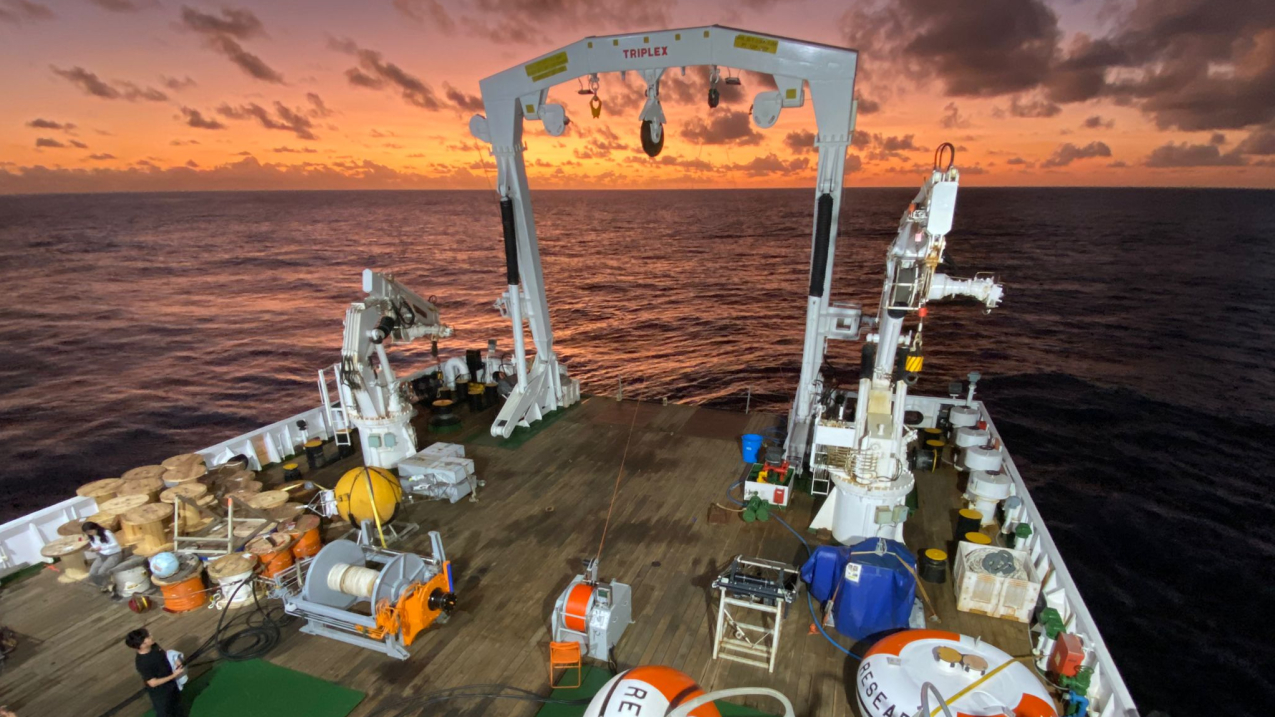Biden-Harris Administration, NOAA invest $6.7 million for ocean observing systems
Today, the Department of Commerce and NOAA announced $6.7 million in funding across three NOAA Research laboratories. These funds will allow NOAA to replenish and expand global ocean and Great Lakes observing system assets to ensure and improve high-quality forecasts, products, services and capabilities at NOAA and forecast centers around the world. These funds are made possible by the Biden-Harris Administration’s Bipartisan Infrastructure Law, as part of President Biden’s Investing in America agenda.
“The Biden-Harris Administration’s Investing in America agenda has strengthened NOAA’s vital networks that provide data for life-saving weather and climate predictions in the U.S. and around the world,” said U.S. Secretary of Commerce Gina Raimondo. “This investment will help NOAA improve and expand climate and weather services so that communities are better prepared to tackle the impacts of climate change.”
“NOAA’s superpower is our multi-billion dollar network of observing systems that take measurements of the ocean and atmosphere and generate the data that scientists around the world use to produce weather forecasts, climate projections and environmental assessments, and study serious problems like ocean acidification and coral reef bleaching,” said Assistant Secretary of Commerce Michael C. Morgan, Ph.D. “With these investments, we are replenishing and expanding our capacity to provide these indispensable measurements to better understand our changing global ocean and Great Lakes resources.”
Understanding the ocean’s role in natural climate variability and human-caused climate change has long been a key area of investigation for NOAA Research laboratories. NOAA scientists have investigated both global, long-term phenomena and more seasonal and regional climate patterns. They have contributed to the understanding of climate fluctuations around the globe, led estimates of the total excess heat absorbed by the ocean and Great Lakes and more. NOAA’s emphasis on matching innovation with observing technologies has provided the foundation for these scientific advances.
This funding will enable NOAA’s Pacific Marine Environmental Laboratory to engage in a wide range of projects to support and expand systems that take critical, long-term measurements of ocean conditions. These include: The restoration of a network of moored buoys in the Atlantic and Indian Ocean basins that are key to understanding climate patterns; installing acoustic sensors that will provide important information about protected marine mammals off of the Oregon coast — an area proposed for off-shore wind development; the addition of new instruments to moorings in the North Pacific to capture measurements of air-sea heat loss and carbon dioxide uptake; and modernizing laboratory facilities to expand e-DNA analysis capabilities and prepare for carbon dioxide removal research.
In the Great Lakes region, this funding will expand long-term monitoring of heat content of the Great Lakes, helping scientists track the impacts of climate change on the largest freshwater system on Earth. This funding will also enable NOAA’s Great Lakes Environmental Research Laboratory to partner with the Woods Hole Oceanographic Institution offsite link and the University of Michigan to deploy autonomous underwater vehicles to monitor the biological, chemical and physical variables under winter conditions.
Finally, this funding will allow NOAA’s Atlantic Oceanographic and Meteorological Laboratory to invest in equipment that will support precise measurements needed for ocean acidification, carbon cycle and coral reef research.
The Pacific Marine Environmental Laboratory received $3,900,000 to:
- Deploy 14 moored buoys and instrumentation in the Atlantic and Indian Ocean basins to support international climate research and forecasting efforts.
- Deploy acoustic sensors with state-of-the-art data loggers at a proposed Bureau of Ocean Energy Management wind energy site off of the Oregon coast. This technology will allow researchers to evaluate seasonal presence of and potential impacts to protected marine mammals.
- Replace a key depth platform. The platform measures conductivity, temperature and depth.The platform is critical for maintaining a long-term time series of global oceanographic measurements.
- Deploy Acoustic Doppler Current Profilers at existing moorings in the North Pacific to enhance understanding of air-sea heat loss and carbon dioxide uptake that inform weather and Earth System process models.
- Modernize and upgrade laboratory facilities to: Expand e-DNA and Argo capabilities; prepare for ocean carbon and chlorofluorocarbon (CFC) tracer observations; and improve laboratory and shipboard work conditions.
The Great Lakes Environmental Laboratory received $1,900,000 to:
- Deploy autonomous underwater data collection systems in the Great Lakes to collect critical data on ice formation, zooplankton, fish and water quality in early winter and in under-ice operations.
- Expand the number of moored heat sensors in Lake Michigan, Lake Huron and Lake Superior.
The Atlantic Oceanographic and Meteorological Laboratory received $900,000 to:
- Invest in equipment that will help NOAA to produce and sustain climate-quality measurements of the ocean carbon cycle.
- Upgrade a temperature-controlled refrigerated room for ocean acidification and carbon cycle research.
- Provide permanent, sustainable, secure housing for Computed Tomography (CT) equipment used for coral reef research.
- Renovate a nutrient lab to meet requirements of a carbon chemistry and nutrient chemistry laboratory.
Visit the Bipartisan Infrastructure Law website to learn about current and future funding opportunities.
Climate, weather, and water affect all life on our ocean planet. NOAA’s mission is to understand and predict our changing environment, from the deep sea to outer space, and to manage and conserve America’s coastal and marine resources.

